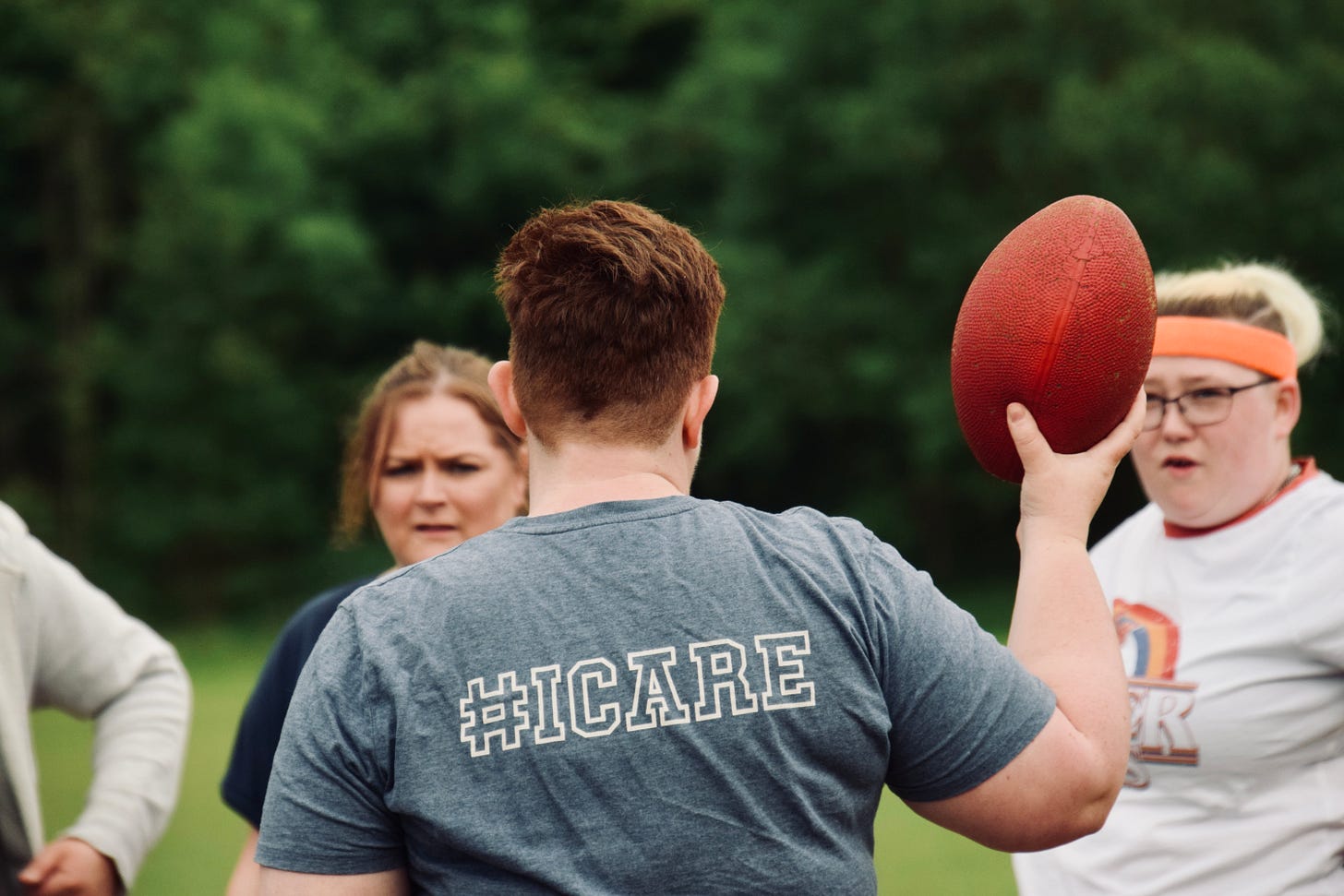Period-friendly training: what does it look like?
It's a common question. Here's what I do
It’s a topic I often talk about. How can we make a training session or team environment period-friendly?
Let’s deal with the basics first.
Why does it matter?
It’s important for players to feel like they belong. Rugby and rugby clubs are historically male.
Alot of coaching practice and research is informed by this male dominance. In order for female players to feel seen and truly included, we (the sport) have to understand and change our practices.
Making your team, training session or clubhouse period-friendly is something I often shout loudly about. Striving towards a period-inclusive practice is a series of small changes that can have the biggest impact.
What does it look like in action?
Stocking free period products in a clubhouse is no longer considered revoluntionary. It is now, thankfully, becoming standard practice.
These products must not run out (otherwise their presence becomes unreliable for people in need).
It’s also vital for products to be stocked pitchside for the players. This can be stocked in the first aid kit or in a bag thats always near the equipment. Mentioning the period product bag is just as important as having it pitchside.
It means words like ‘periods’ aren’t seen as taboo in your training sessions. It helps to normalise it, as well as remind players the products are there if needed.
I’ve played in matches where the pitches were a long way away from the main clubhouse. Having a bag of period products pitchside helps anyone in need and means you always have the bag with you, including for training and away games.
Period-inclusivity can also be embedded within your training sessions. I love the use of levels. I have levels of participation within the sessions I run.
These are open to everyone. A player’s period is one of several potential reasons they might not feel able to fully commit to training. Other reasons could include: worries at home or stresses at work.
Having a flexible approach and continously stating it and demonstrating it to the players encourages people to attend.
If people feel they have to be operating at 110% to attend training, then they may feel they’re only option is to miss a session when they don’t feel at their best. This means they miss out on social connection that that is valuable to them as well as physical activity.
Physical activity can eleviate period symptoms. However it’s important to note that not every period is the same. Players may experience a range of symptoms and some players will have worse periods than others.
Having a flexible approach encourages players to listen to their body and make an informed choice for themselves.
The levels:
These are options that work for my practice and the players I’ve coached. As with everything I suggest, find what works for your coaching and your players.
Level 1: Watching training. This includes options such as bringing a fold out chair, hot chocolate and watching training. It can also involve the player suggesting some challenges or rules for games. Any players watching are always included in any team talks and opportunities for social connection.
Level 2: Static or walking. This level gives the player a chance to be stood still or walking in an activity. It means they can still be involved in a game with reduced movement. If players are on this level, I often then challenge them to use their vision and communication skills to be of use in the activity. I also give out challenges to their teamates to ensure the player is fully included.
Level 3: Non contact participation. This level means the player is fully mobile in all activities, but they are non-contact throughout the session. In any contact games, they can wear a different coloured bib to signify that they are non-contact. This means they can only be touch-tackled and can only touch-tackle the ball carrier. In any smaller contact skill sessions, they can partner with someone else who is non-contact for a different level of contact (see here for ideas on non-contact ways of developing contact skills). Players can also work on other skills during this time, such as kicking or passing that don’t require any contact.
Level 4: Contact participation. The highest level of participation for that training session
The more you give people the options or make them aware of it, the more embedded this approach will become. Players still may prefer to rest at home. That is still an option within this approach.
Checking on how they're feeling either after training or the next time you see them is important. Don’t make them feel guilty for listening to their body.
This method works best when players tell you what level they’d like to participate at before the session or change levels partway through training. It’s gives them autonomy over their own participation.
However, if you notice something is not quite right with a player, the levels are also there for you to suggest to them as an option.
Did you know there’s a subscription option for Coaching Care Creativity? Nothing is behind a paywall so your subscriptions or coffee clicks can help keep the content going. The subscriptions are £5 a month or £50 for the year. You can also buy me a one-off coffee for just £5.



